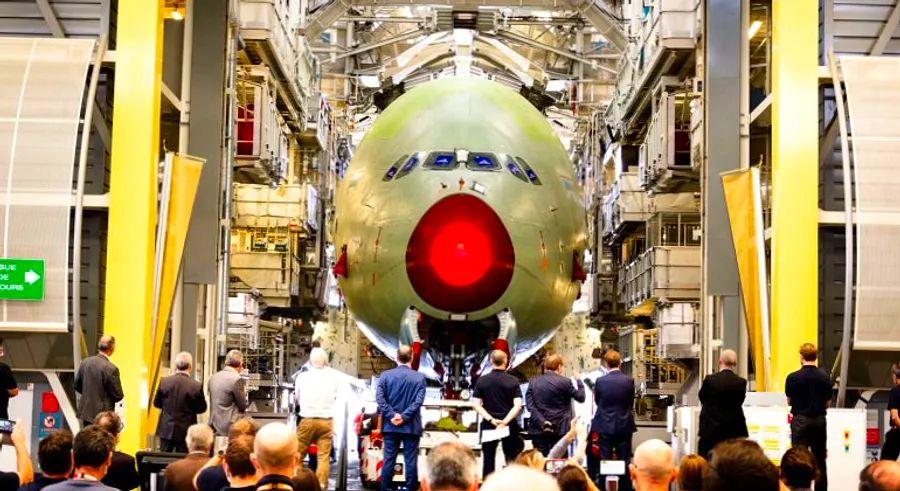The final Airbus A380 superjumbo has been assembled in France, marking the end of an era for the iconic aircraft.

A true marvel of engineering, the Airbus A380, made up of four million parts from 30 countries, holds the title as the world’s largest passenger jet. Its production, however, is coming to a close.
The assembly of the final A380 superjumbo has been completed, following the 2019 announcement that Airbus would discontinue the aircraft.
Freelance photographer Aviation Toulouse (@FrenchPainter) captured the moment the final A380 was spotted at the Jean-Luc Lagardere facility, an Airbus plant located at Toulouse-Blagnac Airport in southern France.
Since its debut with Singapore Airlines in 2007, over 240 Airbus A380s have been delivered from this very facility.
The initial assembly of the final Airbus A380, serial number 272, is now complete, with the team at manufacturing station 40 finishing their work.
The next step for the aircraft takes it to station 30, where, according to Airbus media relations manager Anne Galabert, the engines will be installed and extensive tests will be conducted on systems such as hydraulics, electrics, onboard computers, landing gear, and moving parts.
Anne Galabert explains that the final tests are carried out outdoors, including checks on the fuel gauges, cabin pressurization, radio equipment, radar, navigation systems, and sealing of the fuel tanks – after which the plane will be readied for flight.
Following engine testing, the aircraft will embark on its maiden flight to Hamburg, Germany, where the interior will be fitted, painted in the livery of Emirates Airlines, and finalized for customer delivery.
In February of this year, the last convoy to the Final Assembly Line (FAL) took place, with large crowds gathering in Levignac, France, to witness the transportation of the wings, fuselage sections, and horizontal tailplane by truck.
Building the A380 is an immense undertaking, requiring the collaboration of 1,500 companies that supply every part, from the smallest rivets and bolts to the seats and massive engines.

The fuselage sections arrived from Hamburg, Germany, and Saint-Nazaire, France, while the horizontal tailplane came from Cadiz, Spain. The vertical tail fin was also crafted in Hamburg. These vital components traveled to France via a combination of road, sea, and air transport.
The Toulouse facility serves as the headquarters for Airbus, housing both the corporate offices and the flight test department, in addition to being the site where the A320, A330, and A350 aircraft are built.
This A380 is among the last eight still set to be delivered to Emirates, the aircraft’s largest client, with one additional unit destined for ANA in Japan.
‘This is a tough decision,’ said Airbus CEO Tom Enders in February 2019, when the company announced the end of the A380 program. ‘We’ve put in tremendous effort, resources, and dedication into this aircraft.’
Airbus overestimated the demand for the A380. By the time the 2019 announcement was made, only 234 units had been delivered—far short of the 600 originally forecast when the aircraft was first launched.
Airlines began shifting their focus to lighter, more fuel-efficient planes, and the pandemic further accelerated the decline of the A380’s appeal.
Carriers such as Lufthansa, Qantas, and Air France grounded their A380s earlier this year, as a significant drop in air travel demand led to many flights operating at nearly empty capacity.
Tarmac Aerosave, located in the French town of Tarbes, completed its first A380 decommissioning project in November 2019. Souvenir keychains made from the aircraft’s fuselage quickly became a popular item among aviation enthusiasts.

1

2

3

4

5
Evaluation :
5/5